The state of Washington is an important state with a lot of symbolism and meaning. It’s even named after the first President of the United States! Did you know that Washington State has multiple nicknames? One of those nicknames is the Chinook State. But why? Follow along to discover why Washington is called the Chinook state.
Why is Washington Called the Chinook State?
Although the state of Washington is known for many things, technically, it doesn’t have an official nickname or motto. While uncommon, some people call this state the Chinook State. This nickname refers to the Chinook Native Americans. Interestingly, the state also has an unofficial motto, “Al-ki” which is Chinook for “by and by.”
The Chinook live near the mouth of the Columbia. There are five Chinook-speaking tribes within the Chinook Indian Nation. The Chinook were known as great fur traders and utilized the Columbia River to their advantage.
Sadly, while the Chinook Indian Nation exists today, the tribe isn’t federally recognized. Instead, it was federally recognized as a protected tribe in January 2001 before being reversed in July 2002.
Other Washington Nicknames and Symbols
While Washington is sometimes called the Chinook state, its most common unofficial nickname is the Evergreen State. C.T. Conover nicknamed the state the Evergreen State because of the beautiful evergreen forests. Some of the best forests are in the state. Next time you visit, you can go see the Gifford Pinchot National Forest, Capitol State Forest, or Colville National Forest.
While the state doesn’t have an official nickname, many official symbols represent this beautiful green state. For instance, the state fruit is the apple, which grows abundantly in the state. The official state bird though is the yellow goldfinch. Children in 1951 decided the official state bird by voting. Did you know you can also see orca whales in Washington State? The orca whale is the state’s official marine mammal. It was designated as the official marine mammal of the state of Washington in 2005.

Orca whales are Washington state’s official marine mammals.
©slowmotiongli/Shutterstock.com
Animals in Washington State
Now that we know why Washington is called the Chinook State, we can dive into the animals that call this special state home. Follow along to learn more about some common animals in the state.
Orca Whales
Our list starts with orca whales, which are the official state marine mammal of Washington. Another name for orca whales is killer whales. They are large, social, and incredibly intelligent. Orca whales belong to the family Delphinidae. Interestingly, despite having ‘whale’ in their name, orcas are actually the largest animal in the dolphin family. Whale and dolphin watching is a popular activity in Washington. You can spot these large and majestic marine animals in Lime Kiln Point State Park and Deception Pass State Park. Multiple tours launch from Washington state and take you to popular orca spots.
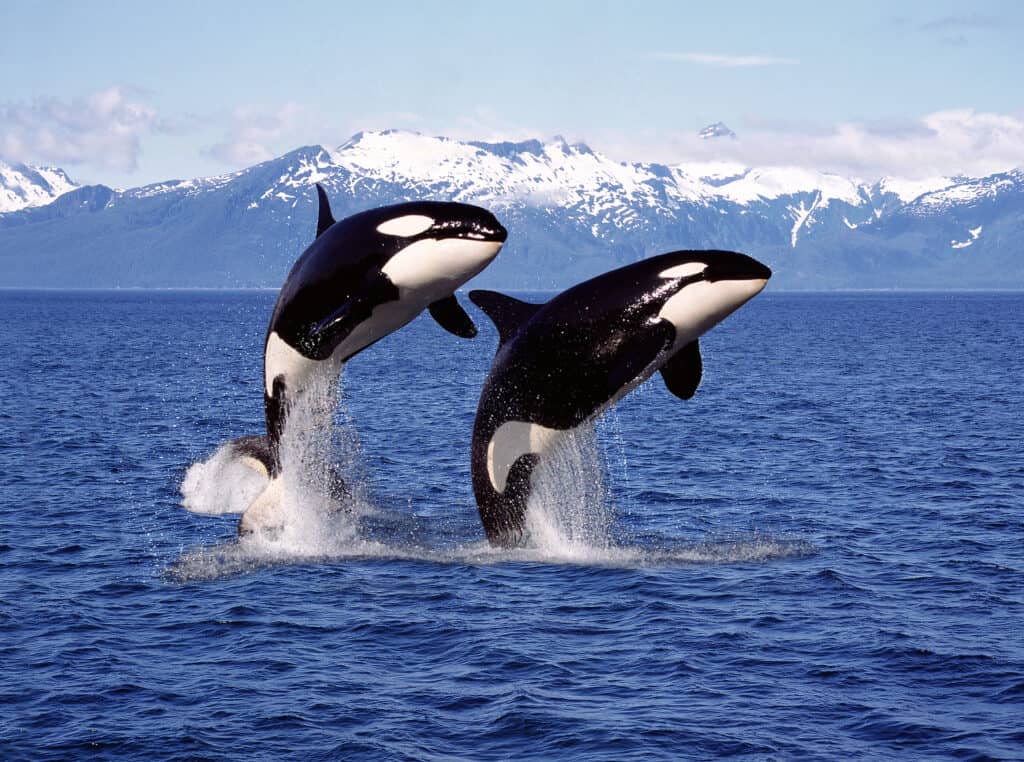
Orca whales are members of the family Delphinidae.
©slowmotiongli/Shutterstock.com
Mountain Lions
Another large and impressive mammal in Washington state is the mountain lion, however, encounters with cougars are rare. Cougars live throughout the state in different environments. You can find them in mountainous terrain and thick forests. Currently, there are about 1,500 mountain lions left in the state. Mountain lions are native to the Americas. In short sprints, these large cats can reach speeds up to 50 mph. Mountain lions are also called pumas or panthers.
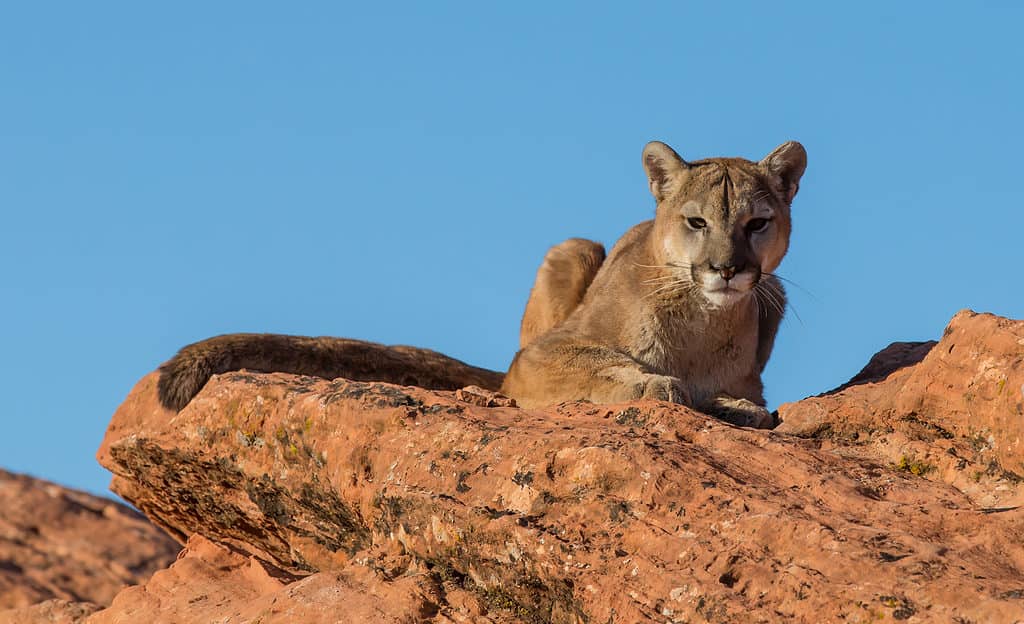
There are about 1,500 mountain lions in Washington state.
©Warren Metcalf/Shutterstock.com
Little Brown Bats
Not all mammals in Washington state are big. The little brown bat lives throughout the state. They are small and furry nocturnal animals. Little brown bats are about 3 to 4 inches long with a wide wingspan. Currently, the International Union for Conservation of Nature (IUCN) lists little brown bats as endangered. Little brown bats don’t just live outside. They also take shelter in human structures during the day. Little brown bats also use bat houses to roost.
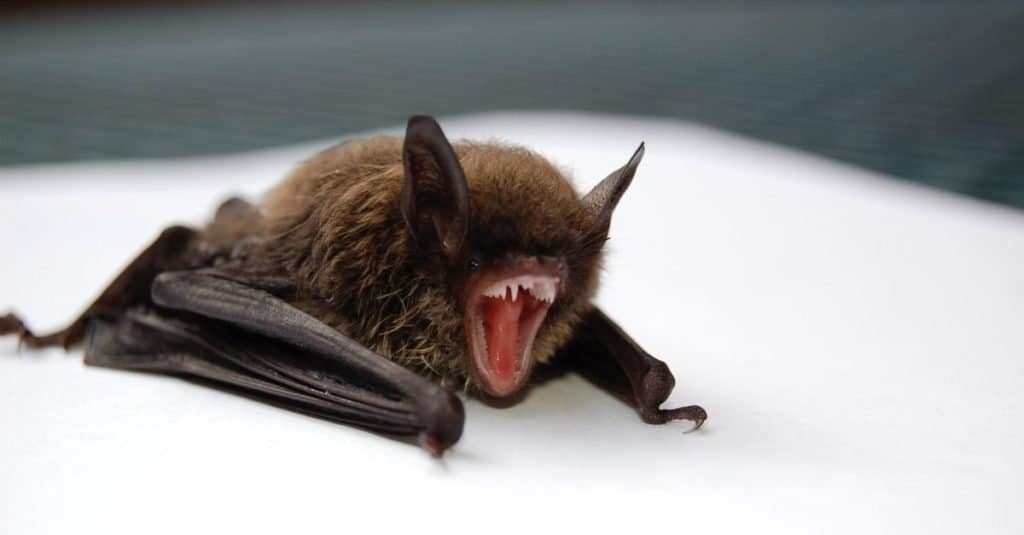
According to the International Union for Conservation of Nature (IUCN), little brown bats as endangered.
©Daily-Images/Shutterstock.com
Pacific Treefrogs
The next animal on our list is the Pacific treefrog, which is native to the Pacific Northwest. These lovely frogs can live in extreme conditions within southern Alaska. Pacific treefrogs live near bodies of water, which they use to reproduce. These treefrogs are green, brown, and yellow, but change color frequently. Female Pacific treefrogs are larger than males, but both grow to about 2 inches long. The Pacific treefrog is actually Washington state’s official state amphibian.

Pacific treefrogs reach about two inches long.
©Oakland Images/Shutterstock.com
Gopher Snakes
The next animal on our list is the gopher snake. They are non-venomous snakes we sometimes confuse for rattlesnakes. To defend themselves, they lift their bodies high and strike at predators with their noses. Gopher snakes are endemic to North America. Currently, experts recognize nine gopher snake subspecies. Gopher snakes have a unique chain-like pattern and are typically different shades of brown, yellow, black, and white.
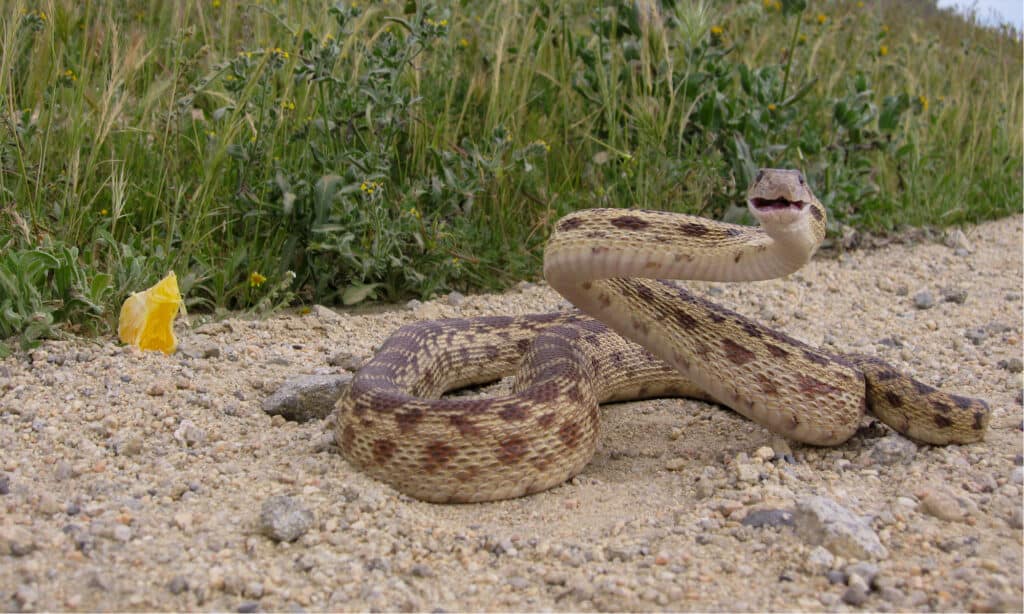
Sometimes, gopher snakes act like rattlesnakes.
©rawaccess/Shutterstock.com
American Goldfinch
Last but not least is the American goldfinch, a vibrant and small North American finch. This bird is only about 4 to 5.5 inches long, with a wingspan almost double their size. American goldfinches are easy to spot. They live in different environments including fields, meadows, urban places, roadsides, and gardens. These birds are also very social. They live in groups with different bird species during non-breeding seasons.
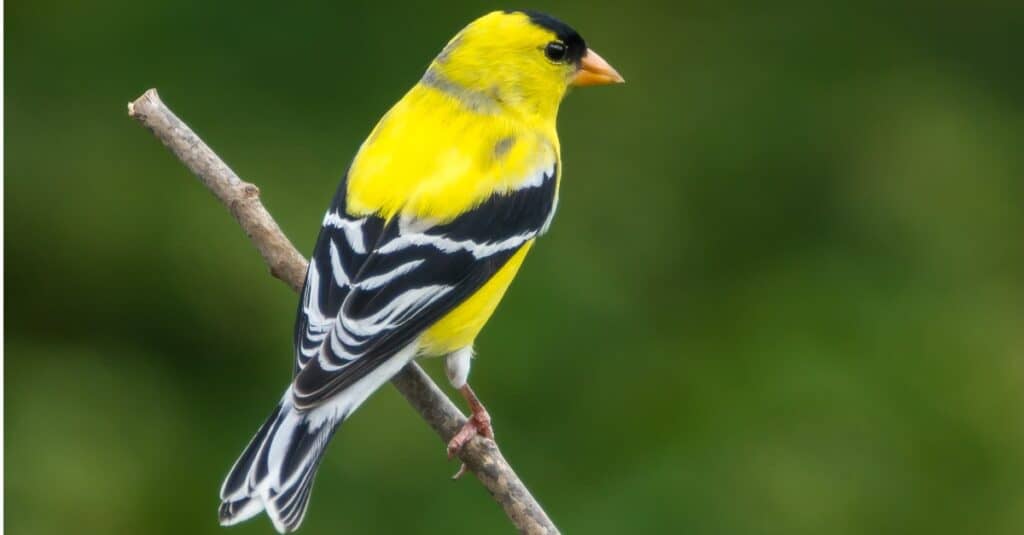
American goldfinches are very social.
©iStock.com/impr2003
The photo featured at the top of this post is © Steve Bower/Shutterstock.com
Thank you for reading! Have some feedback for us? Contact the AZ Animals editorial team.







